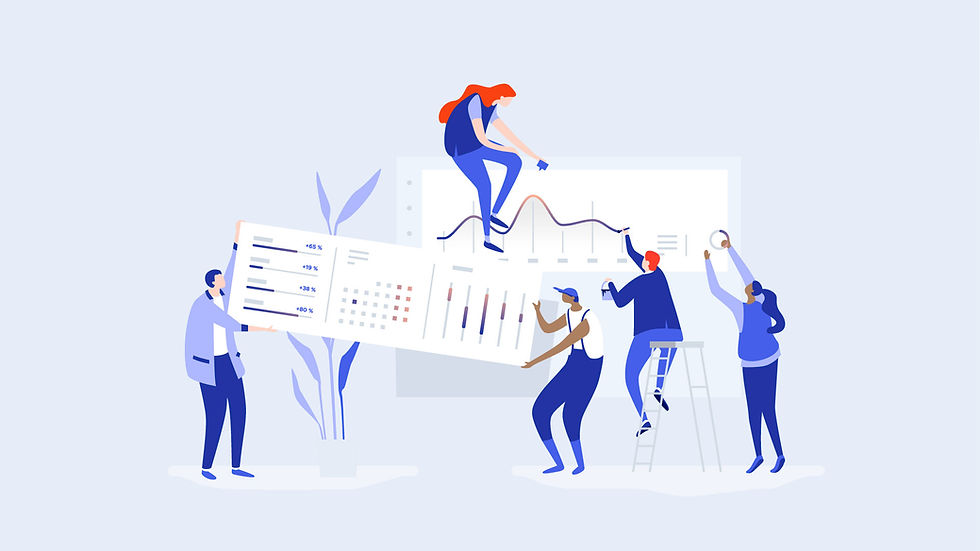How to Track App Events - A letter to developers from an analyst
- Supl.ai
- Jun 22, 2021
- 3 min read
Updated: Aug 7, 2023
Dear developer,
Congratulations on building the MVP, now that it’s up and running let us work together to start tracking how users use it so we can continue building an outstanding product!
Analyzing the events will provide invaluable insight into how the product is working and highlight growth opportunities. By implementing mobile app analytics, increase the ROI through data-driven campaign strategies that are personalized to different audience segments.
Below I have compiled an easy guide on how to capture user activity on our app and what to look out for.

Event and its components:
An event is the tracking of an action taken by a user on the product. It can also be a response resulting from a user’s action. It is made of three parts, trigger, event properties, and user properties.
Trigger - The point at which the event gets tracked. For example, when a user successfully logs into the app as a result of a login attempt.
Event property - Additional information about this action. For example, the method used while logging in - Login through Facebook or Gmail.
User property - Additional information about the user who took the action. For example, age, gender, location, device, etc.
Types of Events
There are basic events that are common across mobile applications and there are custom events that are specific to mobile applications based on the requirement of the product and business. Most event tracking tools capture the basic events by default and provide an easy way to create custom events.
Read on to learn more about Event Tracking Tools
Basic events
Below are examples of some of the basic events common to all mobile applications.
Application Open: This gets triggered when a user opens the application either from cold or from the background or a new install. The event properties for this would be the state of the app from which it was opened (cold or background).
Screen View: This event gets triggered whenever there is a change in the screen in the application, with the names of the previous screen name and the new screen name as event parameters. This event can be used to understand the user journey inside the application.
In-app Purchase: As the name suggests, whenever someone makes a purchase from within the app, this event tracks the details of what was purchased.

Application Uninstall: Pretty self-explanatory by the name. This event helps map the user journey that led them to uninstall and can help with product improvement ideas.
Custom events:
These can be based on the industry and also the specific requirements of the application. Some examples -
Gaming Apps: level_start, level-end, level_up, spend_virtual_currency, unlock_achievement etc.
E-commerce: begin_checkout, add_to_cart, select_item, view_item, add_shipping_info etc.
Fitness Apps: steps_logged, session_attenteded, class_booked, history_checked, etc.
Template to structure the events:
The format provided below is simple enough to understand and at the same time sophisticated enough to convey all the essential information for all the stakeholders to work on.


Once we have the events we need, various mobile app analytics tools are available online that can be used to drive value from these events.
More about some of the widely used tools/technologies for event tracking
Best Practices:
Naming convention
Following a naming convention makes it easy for everyone to instantly understand what an event means. The purpose is the same as variable naming during coding. For example, action_object can be a convention, and event names could be opened_app or successful_purchase.
Holistic Capturing
Every action that a user can take with the product should be tracked with the right properties. The way to do this is to open the app and go through every screen and each action that a user can take and fill in the template shared above.
Tracking Plan
A common mistake is tracking duplicate events with little analytical meaning and tracking multiple events which can be replaced by a single one by appropriate event_property tracking. For example, instead of tracking each screen change with a new event, every screen change can be clubbed into one event by tracking previous_screen and current_screen.

Document events
Data-dictionary is one of the most critical assets for an analyst. Documenting events, when they get triggered and what they mean makes it extremely easy to maintain them, and get meaningful insights from them.
Cheers,
Nerdy Analyst.
It is never too late to start acting on this, a day of delay in capturing the data is a day worth of data lost.
Having worked with clients across various domains, we, at Supl.ai Analytics excel at defining analytical processes and driving monetary value from product data.

Comments